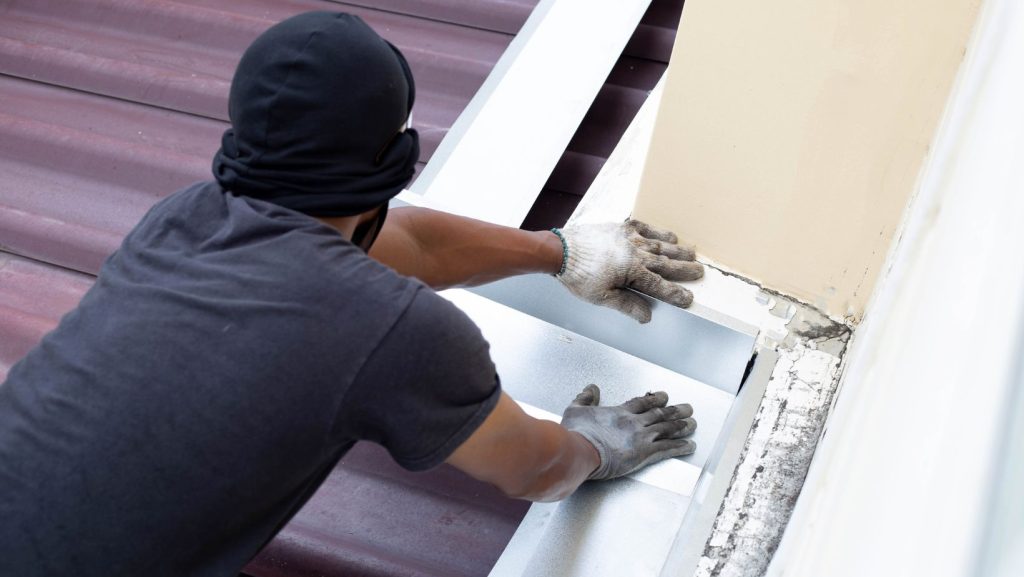
A dripping rooftop can quickly turn into a homeowner’s nightmare, leading to costly repairs and potential damage to belongings. Addressing roof leaks promptly is needed to prevent further deterioration and potential safety hazards. Here are a few methods to solve roof leak problems & save your home from water damage. Before we start, to know about the consequences of roof leaks to the home structure, please visit the website hyperlinked.
Find the Source of the Leak:
Before attempting any repairs, it’s crucial to pinpoint the exact location of the leak. Water stains on ceilings or walls often provide clues, but tracing the source can be challenging. Begin by inspecting the roof for missing or damaged shingles, cracked flashing around chimneys or vents, and worn-out seals around skylights. Use binoculars if necessary, and consider hiring a professional roofing contractor for a thorough assessment.
Patch Damaged Tiles:
Missing or damaged shingles are a common cause of roof leaks. If you notice cracked, curled, or broken shingles, it’s essential to replace them promptly. Start by carefully removing the damaged shingles using a pry bar or a specialized shingle removal tool. Once the area is clear, apply roofing cement to the underside of the new shingle and secure it in place. Ensure proper alignment to prevent future leaks. For tile roofs, replace any cracked or broken tiles using similar methods.
Seal Flashing and Vent Boots:
Flashing, which consists of thin metal strips installed around roof penetrations like chimneys, vents, and skylights, plays a crucial role in preventing water intrusion.

Over time, flashing can become corroded or loose, compromising its effectiveness. Inspect the flashing for signs of damage or deterioration and replace it if necessary. Additionally, check the rubber boots around vent pipes for cracks or tears and seal them with silicone caulking to prevent water from seeping in.
Apply Roof Sealant:
Roof sealant is a versatile solution for addressing minor leaks and preventing future water damage. Available in liquid form, roof sealant can be applied to small cracks, gaps, or seams in the roof surface, providing a waterproof barrier. Before applying sealant, clean the affected area thoroughly and allow it to dry completely. Use a caulking gun to apply the sealant evenly, ensuring full coverage of the damaged area. Allow the sealant to cure according to the manufacturer’s instructions before testing for leaks.
Invest in Professional Roof Maintenance:
While DIY repairs can address minor roof leaks, investing in professional roof maintenance is vital for long-term protection against water damage. Schedule regular inspections by certified roofing contractors to identify potential issues early on and address them before they escalate into costly repairs. Specialized maintenance may include cleaning debris from gutters & downspouts, inspecting for signs of wear and tear, and performing necessary repairs to extend the lifespan of your roof.
Conclusion:
Dealing with roof leaks promptly is central to dodging water damage and upholding the structural integrity of your place. By knowing the foundation of the leak, patching damaged shingles, sealing flashing and vent boots, applying roof sealant, and investing in professional maintenance, you can safeguard your home against the devastating effects of water intrusion. Remember that prevention is key, so prioritize regular roof inspections and maintenance to ensure the longevity of your roof and the protection of your property.
FAQs:
How Can I Quickly Identify A Roof Leak?
Look for water stains on ceilings or walls, inspect the roof for damaged shingles or cracked flashing, and consider hiring a professional for a thorough assessment.

What’s The Perfect Way To Fix Damaged Shingles Or Tiles?
Remove the damaged shingles or tiles and replace them with new ones using roofing cement to secure them in place.
Why Is Professional Roof Maintenance Important?
Professional maintenance helps identify issues early on, extends the lifespan of the roof, and prevents costly repairs by addressing potential problems proactively.












